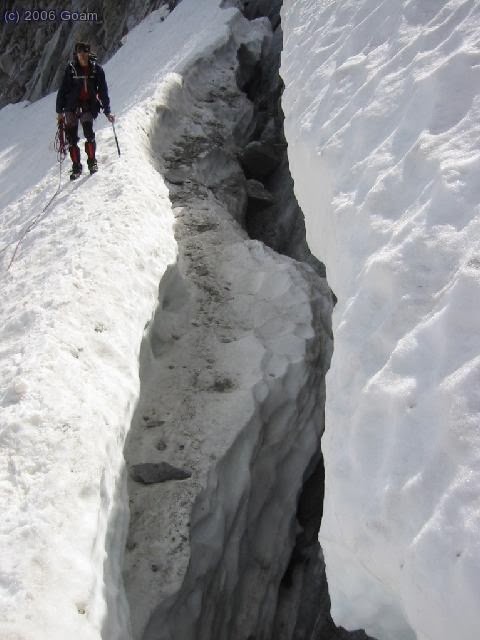A glacier is a mass of permanent ice, which is moving. For it formation are necessary low temperatures and snow compaction are necessary.
Parts of a glacier:
- Cirque: Is the place where all the snow is collected and accumulated.
- Glacier tongue: After the glacier is compacted, it is the place where it descends.
- Moraine: They are the materials transported by a glacier. They can be:
- Side.
- Background.
- Frontal.
- Central.
Types of glacier:
- Valley glacier: They are situated in upland areas and lie in a valley like a river of ice. They are usual in the Alps.
- Cap glacier: They are large accumulations of snow on a point, where there is a lot of snow and the glacier starts were down in several directions. They are common in the Antarctica.
- Hanging glacier: They are smaller than the others. They are formed because a valley is above another. An example is "Monte Perdido"
Formations that occur:
- Drumlin: Mountain with one end with a very pronounced slope and the other with a very slight slope (when the glacier moves).
- Ibones: Lake in the mountain formed because of the melt of a glacier.
- Horn: Is a peak whose faces are cut by the passage of glaciers.














No hay comentarios:
Publicar un comentario